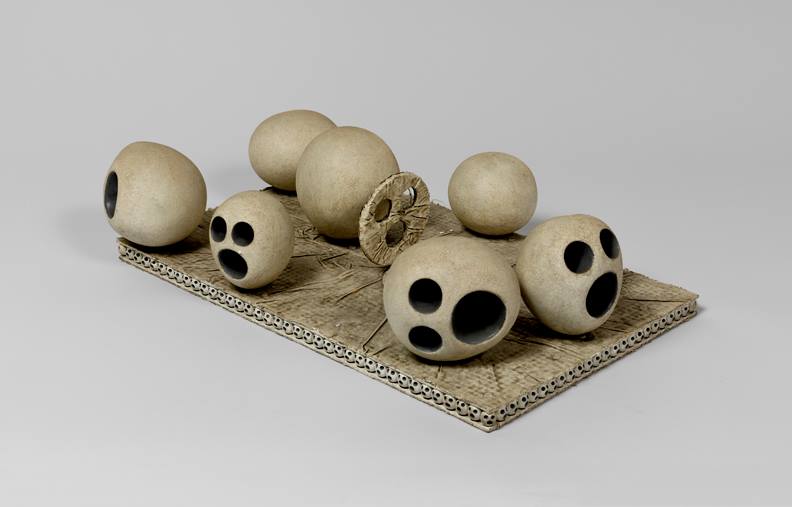Dominick Di Meo: Good Night, Good Mourning, 1974-1984 & Magalie Guérin: re
@ Corbett vs. Dempsey
1120 N Ashland Ave 3rd Fl, Chicago, IL
Opening Friday, September 5th, from 5PM - 8PM
On view through Saturday, October 11th
Corbett vs. Dempsey kicks off the Fall season with Good Night, Good Mourning, 1974-1984, an exhibition of work by Dominick Di Meo. This is the artist’s third solo show at CvsD.
Di Meo (b. 1927) first emerged as an artist in Chicago during the late 1940s, when he was associated with like-minded figurative expressionists like Leon Golub and George Cohen. Deeply psychological, Di Meo’s work exhibited a lighter sensibility couched in a morbid exterior. After he relocated to New York at the end of the 1960s, Di Meo’s playful side came more fully forward, as the work literally grew lighter, from a dark, often black, palette, to a pale, often whitewashed look. For a decade starting in the mid 1970s, he made an expansive group of works utilizing tiny putty heads, sculpted with open mouths and pinhole eyes, ranging in relief over pock-marked canvases or lined up on 3-dimensional sculptures. Extending his interest in shrines and fetishes, these sculptures were a new addition to his repertoire, the aggregated little heads lending them a deranged feel, like aghast smiley faces at an Aztec ritual ceremony. As ever, in these works and associated drawings and paintings, Di Meo is formally resourceful, a master of texture and a ruthless experimenter with materials. Twenty-two of these works were shown at an exhibition at P.S.1 in New York in 1982, but they have remained otherwise unseen. This will be their first exhibition in Chicago. Good Night, Good Mourning, 1974-1984 is accompanied by a 56-page catalog, with a short essay by John Corbett.
In the West Wing, CvsD proudly presents Magalie Guérin, re. Born in Montréal, Guérin is an important young painter based in Chicago. This exhibition presents six related paintings, intimate in scale, brilliant in form and color, all of which emanate from the same starting shape. Extrapolations on a theme, they are pushed to a place where the departure point is so distant it has vanished.
Official Website
More events on this date
Tags: Corbett vs. Dempsey, Dominick Di Meo, Magalie Guerin

« previous event
next event »